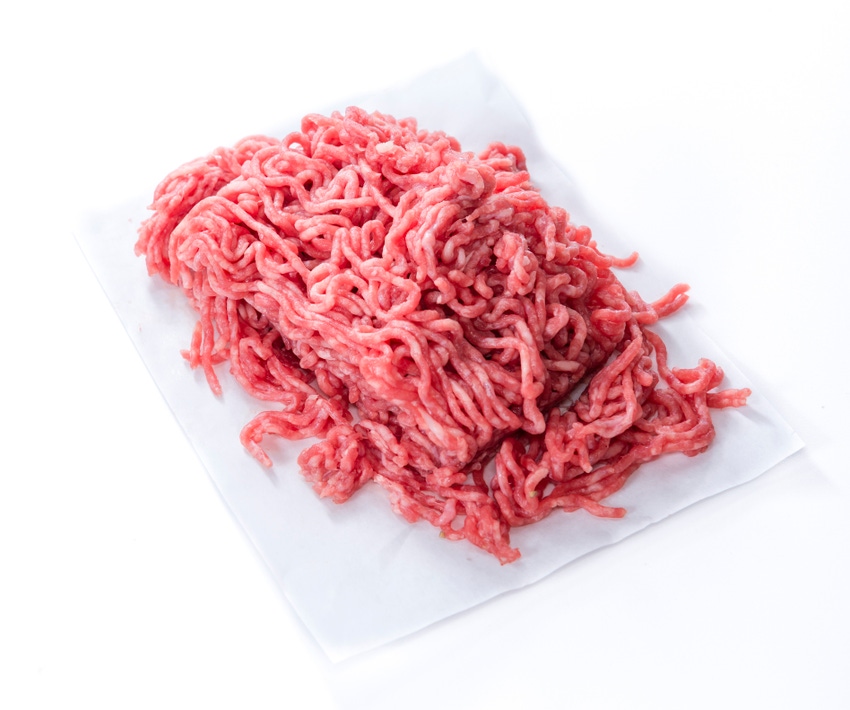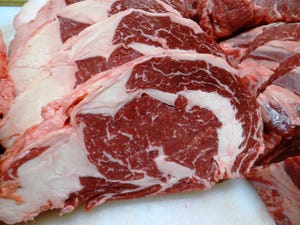Slaughter cows and ground beef
Supply of nonfed beef is tightening faster than that of fed beef.

One of the principal ingredients in many ground beef formulations is 90 percent lean beef trimmings (90s). The wholesale price of 90s reached a record level of $338.56/cwt. the last week of March and appears to still be moving higher. Nonfed beef (cull cows and bulls) is the source of 90s. Fed beef (fed steers and heifers) produce fatty trimmings, commonly reported as 50 percent lean trimmings. The current wholesale price of 50s is $102.84/cwt. A reference formulation of ground beef consists of a 5:1 ratio of 90s to 50s, that is, five pounds of 90s and one pound of 50 percent lean, producing an 83.3 percent lean ground beef product. This wholesale ground beef formulation is currently priced at $299.27/cwt., also a record level.
Cull cows and bulls contribute to nonfed beef production, which is calculated as cow slaughter multiplied by cow carcass weight plus bull slaughter multiplied by bull carcass weight. Monthly average nonfed beef production peaked cyclically in January 2023 and has dropped 8.1 percent in the last 14 months. By contrast, fed beef production has decreased 4.4 percent since the recent cyclical peak in 2022. Thus, the supply of nonfed beef is tightening faster than that of fed beef.
Cull cow prices are increasing in response to the demands of the nonfed beef market. The price of average dressing Boning cows in Oklahoma auctions the last week of March was $133.96/cwt., a new record high. Cull cow prices the same week ranged from $139.02/cwt. for high dressing Breaking cows to $118.08/cwt. for low dressing Lean cows. Total cow slaughter is down 12.8 percent year over year for the first 11 weeks of the year, with dairy cow slaughter down 14.2 percent and beef cow slaughter down 11.3 percent thus far in 2024. Beef cow slaughter is expected to decrease more sharply if herd rebuilding conditions are favorable this year. This will further decrease nonfed beef production and add to the imbalance between 90s and 50s in the ground beef market.
Each fed steer and heifer produces roughly 150 pounds of 50 percent lean trimmings. In average terms, the 5:1 ground beef ratio therefore requires 750 pounds of 90s to produce ground beef from one fed steer or heifer. This is more or less the boneless trimmings from two head of cull cows. Domestic nonfed beef production is only enough lean to match a fraction of the 50s produced in fed beef production. Imported beef trimmings are used to augment domestic lean beef supplies and utilize more 50s to increase the total ground beef supply. Imported beef trimmings are increasing in response to declining lean beef supplies in the U.S. Current prices for 90s (and, indirectly, cull cows) in the U.S reflects the net impact of imported beef on U.S. market values.
Declining total beef production is pushing beef prices generally higher. Ground beef is even more important in this high beef price environment, but ground beef supplies are declining even faster. Beef supplies will continue to decline, led by decreasing nonfed beef supplies and leading to still higher beef prices ahead.
About the Author(s)
You May Also Like



